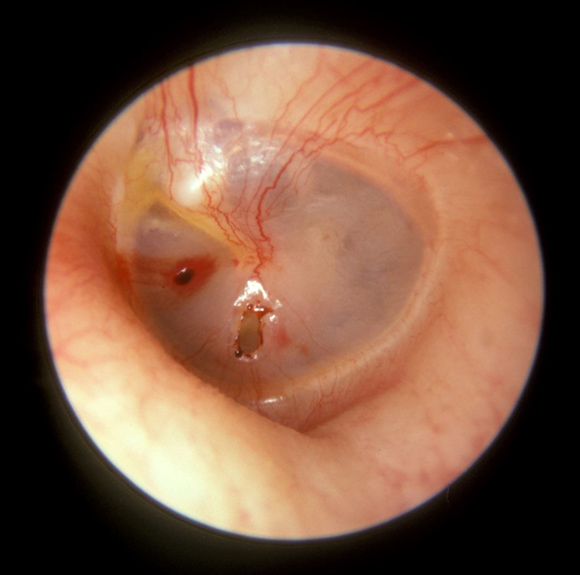In modern warfare, trauma resulting from nearby explosive devices is common. One particularly frequent injury is tympanic membrane perforation, i.e., rupture of the ear drum. The tympanic membrane is susceptible to the positive pressure wave caused by explosions and is more likely to rupture when a blast is strong and nearby, particularly indoors or in close quarters.
Consequences of tympanic membrane perforation are not limited to short- and long-term hearing loss, middle ear infection is also more probable as the tympanic membrane remnants grow into the middle ear cavity. Proper healing of the tympanic membrane is necessary to avoid such outcomes, but whether to allow spontaneous healing or to perform immediate closure surgery is a matter of debate. In addition, a standard closure procedure has not been universally endorsed.
In a recent publication, Branica and colleagues1 from the University Hospital Centre in Zagreb, Croatia sought to determine the effect of patching blast-induced tympanic membrane perforations with silicon foil and whether early rather than delayed patching improves medical outcomes. The procedure is performed under local anesthesia and involves repositioning the ruptured edges of the tympanic membrane, applying silicon foil, and packing the ear with resorptive gelfoam. To answer their research question, the investigators retrospectively reviewed medical records of 210 war casualties with blast exposure, who collectively suffered 315 tympanic membrane perforations. Of these, 254 perforations were left to heal spontaneously, 38 perforations were patched within 72 hours of injury, and 23 perforations were patched between four and six days of injury.
At six months after injury, significantly more perforations were completely healed among those surgically patched (92%) relative to those left to spontaneously heal (80%). Additionally, surgical patching decreased the incidence of ear infection. Of the perforations surgically patched within 72 hours, 97% healed completely relative to 83% of those patched between four and six days. It is hypothesized that this difference is due to the edges of the perforated ear drum growing more readily into the middle ear mucosa in the days between injury and surgery.
Branica and colleague's research suggests that a simple ear drum closure procedure could preserve hearing and reduce infection in victims of blast-induced tympanic membrane perforation; however, not enough evidence has accrued to warrant a formal change to clinical practice.

1 Branica, S., Dawidowsky, K., Kovač-Bilić, L., & Bilić, M. (2019). Silicon foil patching for blast tympanic membrane perforation: a retrospective study. Croatian Medical Journal, 60(6), 503.
Your 15 minute session will timeout in approximately 10 minutes.
If you're in the middle of entering information, please close this warning and save your progress (if possible) or finish up your task.
If your session fully times out, you will lose any un-saved work.
Your current Blast Injury Research Program session has expired.
Your next click will take you away from the private area, and you will lose any work you have in-progress.
Please enter your email address, and try again.